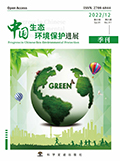作者
靳淑博1 , 杨治广1,* , 张军政1 , 杨静也1 , 陈硕1 , 郝晴圆1 , 贺晓晓1 , 王晨曦1 , 霍雨1 , 顾世元1 , 赵秀秀1 , 张文麒2
Author
JIN Shubo1 , YANG Zhiguang1,* , ZHANG Junzheng1 , YANG Jingye1 , CHEN Shuo1 , HAO Qingyuan1 , HE Xiaoxiao1 , WANG Chenxi1 , HUO Yu1 , GU Shiyuan1 , ZHAO Xiuxiu1 , ZHANG Wenqi2
Company
1. Henan Province Key Laboratory of Water Pollution Prevention and Rehabilitation Technology,
参考文献
[1] 王力, 史雅娟, 杨林军, 等. 负载在SCR脱硝催化剂表面的硫酸铵盐分解特性研究[J]. 应用化工, 2020, 49(10): 2471-2474.

